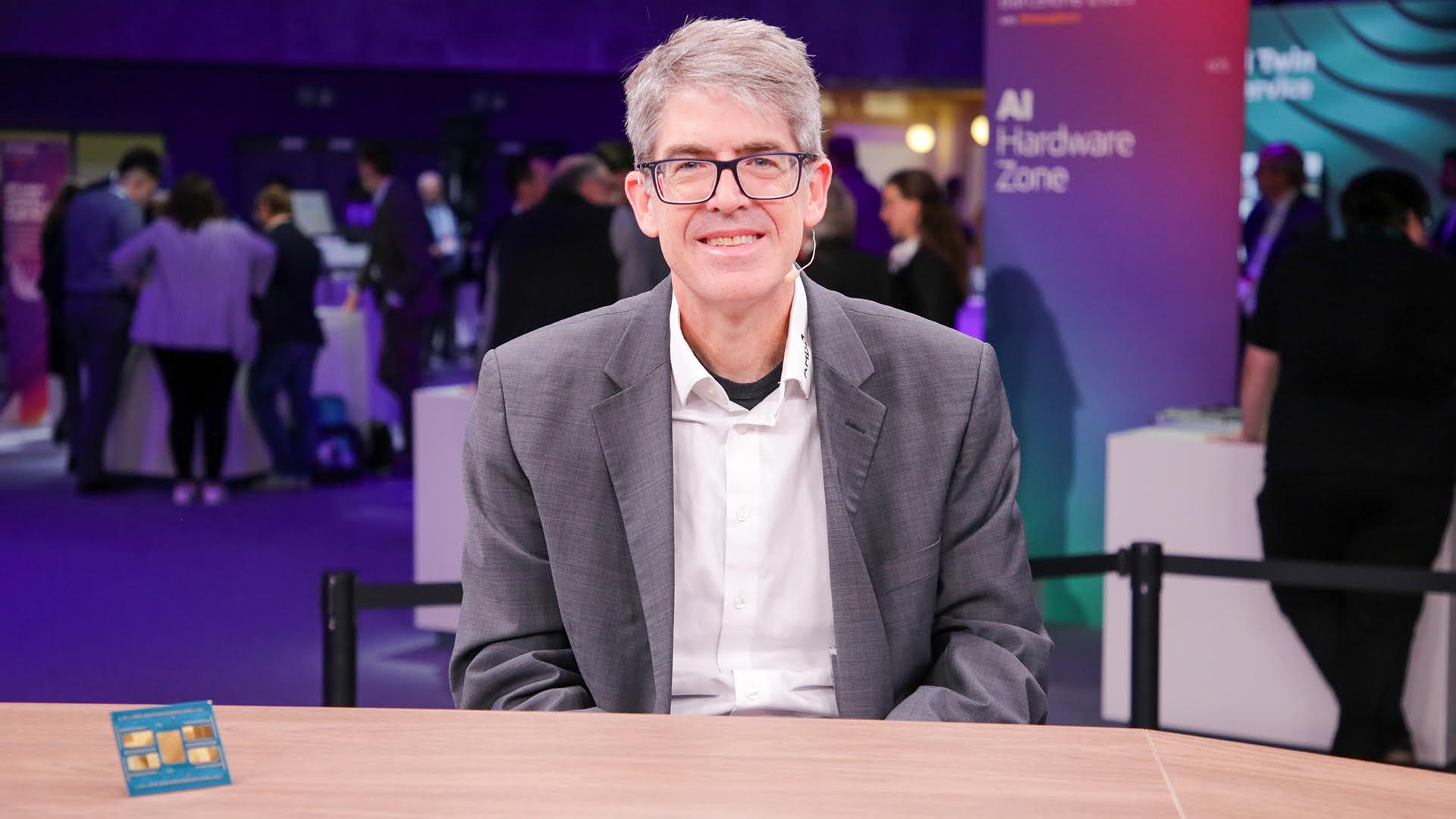 EMERGING TECH
EMERGING TECH
 EMERGING TECH
EMERGING TECH
 EMERGING TECH
EMERGING TECH
The demand for computing power is rapidly increasing due to the use of high-performance applications and artificial intelligence by IT users. However, it is also important to balance this growth with sustainability goals, such as reducing power consumption and managing server expansion.
Advanced Micro Devices Inc.’s diverse portfolio of processing technologies, including CPUs and GPUs, addresses the AI challenge and sustainability goals, according to Matt Foley (pictured), director of EMEA field application engineering at AMD. The 4th generation EPYC processor has a modular design with 12 chiplets and an I/O die, allowing for flexibility and participation in evolving standards around chiplet integration.
“Just the modular design and the way that this works allows us to imagine an era of flexibility in that kind of thing going forward,” Foley said. “It’s why AMD participates in some of the evolving standards around chiplet integration. There are options to do things in packaging that you used to have to do in ASICs, and so, as a result of that, it’s certainly interesting to us and … the rest of the industry.”
Foley spoke with theCUBE industry analysts Rob Strechay and Rebecca Knight at the HPE Discover Barcelona event, during an exclusive broadcast on theCUBE, SiliconANGLE Media’s livestreaming studio. They discussed AMD and Hewlett Packard Enterprise Co. collaborating to create sustainable and efficient solutions for European energy and environmental challenges. (* Disclosure below.)
Europe is focusing on energy prices and environmental sustainability, and AMD is working on realistic, fact-based goals and measurements, according to Foley.
AMD is working on advanced design techniques and architecture to produce more sustainable and efficient solutions, and its partnership with HPE is bringing this knowledge to businesses through competitive component markets, Foley explained. Collaboration between AMD and HPE is key to building better systems, with a focus on engineering-level collaboration and realistic problem-solving.
“It’s really an engineering-level collaboration. The inputs that we get from the customers, the inputs that HPE also gets from the customers as well, in terms of what are the features and things that we need to see,” Foley said. “There also has to be a degree of realism. What can you really do? Where and how should we implement this so that it’s not very useful to have a system that, for example, you can’t deploy.”
Here’s the complete video interview, part of SiliconANGLE’s and theCUBE’s coverage of the HPE Discover Barcelona event:
(* Disclosure: TheCUBE is a paid media partner for the HPE Discover Barcelona event. Neither Hewlett Packard Enterprise Co., the main sponsors of theCUBE’s event coverage, nor other sponsors have editorial control over content on theCUBE or SiliconANGLE.)
Support our mission to keep content open and free by engaging with theCUBE community. Join theCUBE’s Alumni Trust Network, where technology leaders connect, share intelligence and create opportunities.
Founded by tech visionaries John Furrier and Dave Vellante, SiliconANGLE Media has built a dynamic ecosystem of industry-leading digital media brands that reach 15+ million elite tech professionals. Our new proprietary theCUBE AI Video Cloud is breaking ground in audience interaction, leveraging theCUBEai.com neural network to help technology companies make data-driven decisions and stay at the forefront of industry conversations.